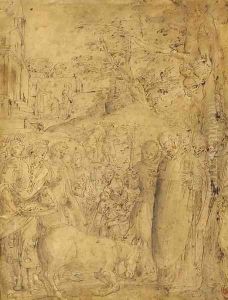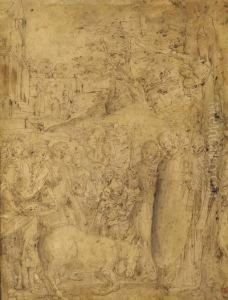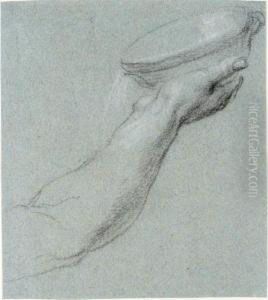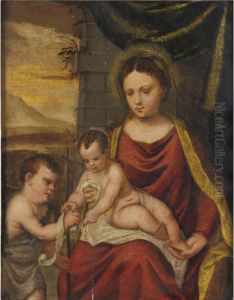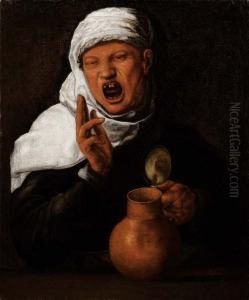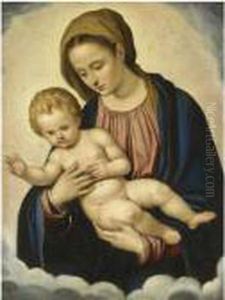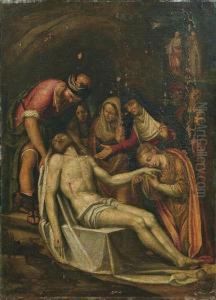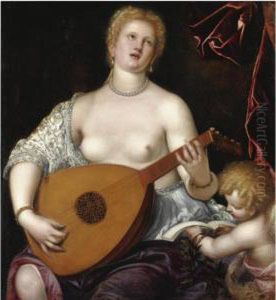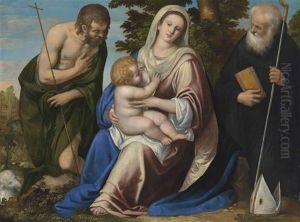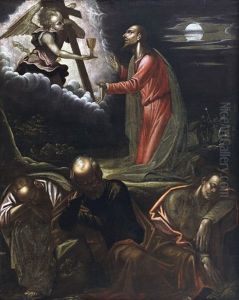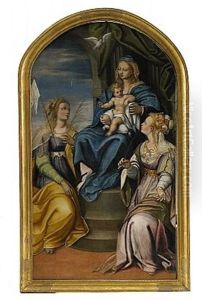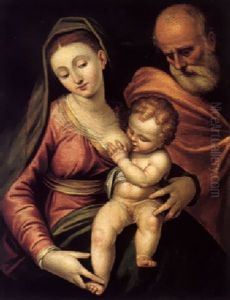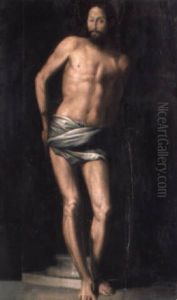Simone Peterzano Paintings
Simone Peterzano was an Italian painter of the late Renaissance period, born in the year 1535 in Bergamo, Lombardy, which was then part of the Republic of Venice. He is often remembered as the master of the famous Baroque painter Michelangelo Merisi da Caravaggio, who apprenticed in his workshop from 1584 to 1588. Peterzano himself was a student of Titian, one of the most significant Venetian artists of the 16th century, which provided him with a solid foundation in the techniques and styles of High Renaissance art.
Peterzano's works include religious compositions, altarpieces, and frescoes, which were primarily influenced by Mannerism, a style that emerged in the late Renaissance and is characterized by artificiality, grace, and elegance rather than the more naturalistic approaches of his teacher, Titian. Peterzano’s artistic production signifies a transition from the High Renaissance to the early Baroque period. Despite his importance as a teacher, his own paintings were often overshadowed by the success of his most renowned pupil, Caravaggio.
Simone Peterzano’s artistic career was mainly centered in Milan, where he became a significant figure in the local art scene. His notable works include the 'Decollation of St John the Baptist' for the church of S. Maria presso San Celso and a series of frescoes for the Certosa di Garegnano, a charterhouse located in Milan. These works display his mastery of color and composition, as well as his ability to convey dramatic intensity, a trait that would heavily influence Caravaggio.
Peterzano died in 1599 in Milan. His legacy is largely defined by his contribution to the training of Caravaggio, who would go on to revolutionize European painting with his dramatic use of chiaroscuro and his intense, realistic approach to subjects. Although not as widely recognized as his pupil, Peterzano's role in the development of late 16th-century Lombard painting and his influence on one of the great masters of Baroque art ensure his place in the annals of art history.
